Tristate restaurants prepare for outdoor dining
Dining out. Orange County, N.Y., is slated to enter Phase Two on June 9. Pike County, Pa., moved into the yellow phase on June 5, allowing for outdoor dining while those without outdoor seating are waiting for the green. In Sussex County, N.J., restaurants are now taking reservations for outdoor dining starting June 15.
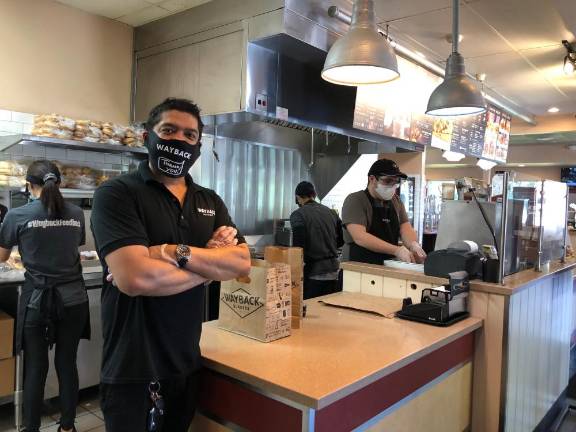
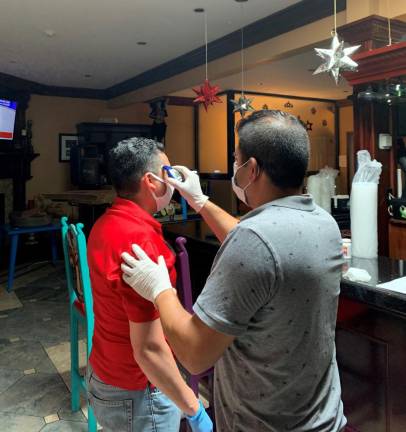
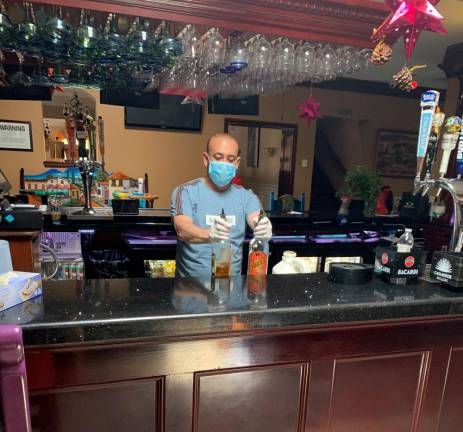
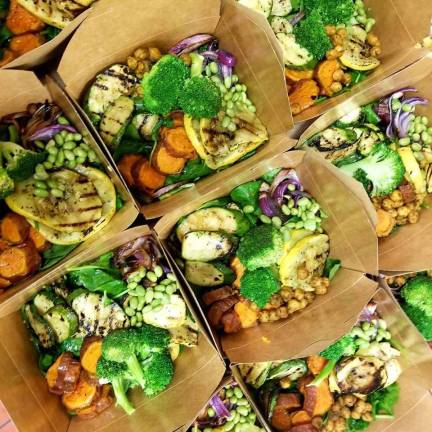
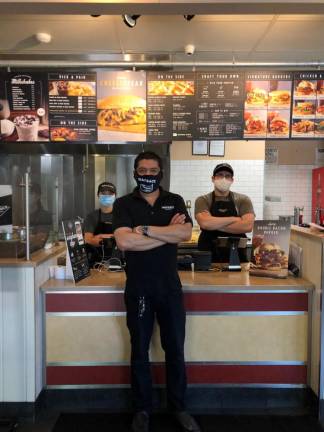
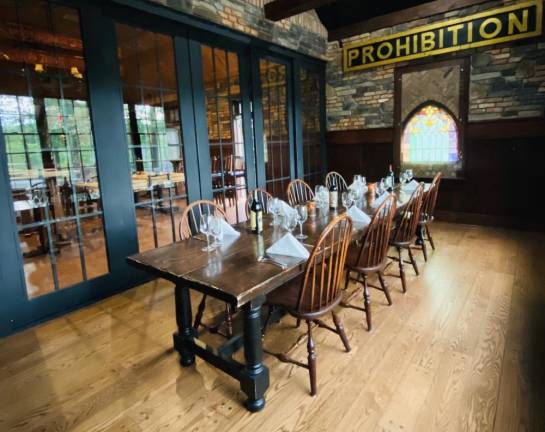
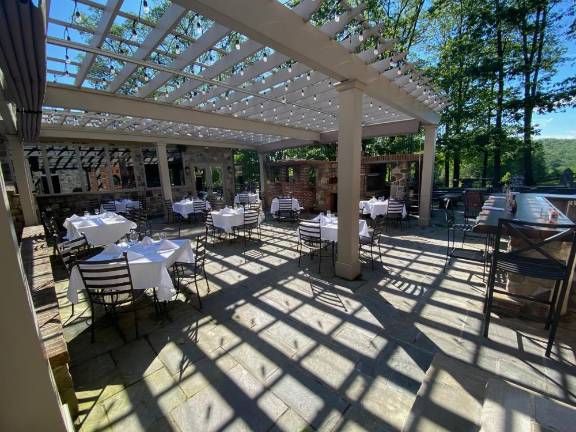
By Molly Colgan
ORANGE COUNTY, N.Y.
Dining in the tristate area is getting kicked to the curb. Outdoor dining is now allowed in Pennsylvania, and will soon be coming to New York and New Jersey. Many restaurants are excited about the prospect of serving guests again -- if they have the outdoor space to accommodate them.
Outdoor dining in Orange County may start as early as Tuesday, June 9, or Wednesday, June 17, said county executive Steve Neuhaus. “We’ve been rallying the troops,” he said. “We believe that if people can go to supermarkets and big box stores and wear masks going safely go in and out, they can certainly do dining.”
The Hacienda, a Mexican restaurant in Goshen, N.Y., was busy every day: families and couples out for dinner, birthday parties, friends grabbing margaritas and guacamole at the bar. Then came COVID-19, and New York restaurants to switched to takeout only. The Hacienda closed. But as Cinco de Mayo approached, the restaurant was flooded with requests. The Hacienda began offering takeout service on May 2.
At 3:30 p.m. on Cinco de Mayo, their phones and internet collapsed under the volume of calls. “We had a line of cars going out to 17M of people trying to order,” said general manager Rico Farias.
Two persistent problems, for the Hacienda, and many of the other restaurants featured here, are soaring meat prices and meat shortages. The Hacienda occasionally runs out of food, which limits its menu. Prices go up and down. “We don’t want to raise the prices because people are not working,” Farias said.
The Hacienda team has kept busy studying how they can go about reopening safely when permitted, looking at what restaurants in Texas and other regions have been doing to keep customers safe, and taking online classes and seminars to prepare for reopening.
Hacienda plans to open its outdoor dining when allowed.
They miss their customers. “We’re almost like a family, you know?” Farias said. “Everybody knows us by name.”
Wayback to the future
Sushil Bhagudia purchased Wayback Burger two years ago. He left his IT career and his four-hour train commute to reinvigorate the business in Monroe, N.Y., and have more time at home with his wife and his kids, who attend Monroe-Woodbury schools.
When the pandemic hit, he didn’t stop. “We never closed, we never let anybody go,” he said. “We gave people the option to stay home if they felt uncomfortable to work. Some of them had older parents at home, etcetera, and I would never want to compromise anybody’s risk.”
For the first three weeks, business was down about 80 percent, he said. Slowly, it’s climbed half back up.
As a franchise, his business has to pay a royalty, on top of rent, taxes, and labor costs. Bhagudia has to sell 30 to 35 cases of burgers, 64 patties per case, every week to break even. “It’s a lot of burgers,” said Bhagudia.
He’s missing out on lunch orders, with so many businesses closed or cut back. Then, during dinner, the restaurant is inundated with a ton of orders at once. But Bhagudia is not letting it get him down. “I take great pride and passion in cooking and serving it,” he said.
Wayback Burger doesn’t yet have outdoor dining options. Bhagudia said a patio “is in the works.”
“We are here. We are open for business,” said Bhagudia.
PIKE COUNTY, Pa.
Pike County, Pa., now allows outdoor dining, since its June 5 move into the yellow phase. Municipalities like Milford have been looking into partly closing or tenting roads to allow restaurants without outdoor options to set up tables in the street. No decisions have been made yet, however.
Dimmick Inn and Hotel Fauchere plan to offer outdoor dining. Other eateries are waiting it out.
Gina Walsh, owner of Chris and Gina’s Café in Dingman’s Ferry, said since they don’t have room for more than two outdoor tables, they’ll stick to the take-out they’ve provided from the beginning. They’re also preparing for the day when Pennsylvania enters its green, least-restrictive, phase.
Like everyone else, she’s been affected by meat prices and shortages. “I’m not comfortable charging that much money,” she said. “The flat irons have gone up at least six dollars a pound.” But she’s staying upbeat as she prepares for the many changes to come. More than anything, she misses her customers. “I’m really looking forward to that one-on-one time when you get to talk to your customers who have become family,” she said.
‘Holding our own’
Owner Nancie Simonet said the Water Wheel Café, Bakery and Bar, a Milford staple for 31 years, never closed a day during the shutdown. “We’re holding our own,” she said. “It’s a whole new business model.”
April saw huge losses but things picked up in May. “We’re in the black, and we’re paying everybody, and we’re paying ourselves,” said Simonet. “That’s all we can hope for.”
As always, there’s the meat problem. “Not until very recently, beef and pork are going through the roof,” she said. She’s adding more vegetarian options.
Simonet is a self-described stickler for social distancing protocols. “I’m a stem cell transplant survivor, as well as a recipient of a bovine heart valve,” she said. “So when this thing came around, I said just ‘You know what, this is going to be a long time before we are who we were.’ And I don’t necessarily think that it’s a bad thing.”
Starting June 5, guests can eat their take-out food outside on the Water Wheel deck, and deposit their trash in can provided. Over the course of the shutdown, Simonet said, customers have been taking food out to their cars, or setting up folding chairs to eat by the creek.
The first week they were open, Simonet said she was in tears nearly every other day in response to customers’ kindness in buying hundreds of dollars of gift certificates. “People have been so nice,” she said.
SUSSEX COUNTY, N.J.
When it was announced that restaurants in New Jersey could open for outdoor dining on June 15, the phones at Mohawk House in Sparta, N.J., started ringing off the hook.
“Phones blew up,” said owner Steve Scro. People wanted reservations, to know if there was anything new on the menu, or just to come in and say hello. The restaurant is trying to slow down the rate of reservations. Outdoor-only is impossible to plan for. What do you do in a thunderstorm?
“We’re being careful about how many we take because it’s weather permitting,” said Scro. “Just like a farmer, weather controls everything. If I go putting 10,000 reservations outside and on June 15 it starts pouring, I can take precautions. But when it’s raining like that, do you really want to sit outside?”
Mohawk House is lucky to have a vast space for outdoor dining and outdoor cooking stations, including a grill and pizza oven. Scro is considering expanding his space temporarily by putting tables on the bocce court. Right now, with tables spaced at least six feet from one another, Scro estimates he could seat about 80.
While they’re excited about the prospect of welcoming guests outdoors, Mohawk House is really looking forward to inviting people inside, even at limited capacity. The restaurant has eight private rooms and lots of open space to work with.
When New Jersey restaurants were ordered to close or switch to take-out only, Scro worked long days providing take-out, setting up an open-air grocery for people struggling to get supplies at supermarkets, and delivering free meals to seniors and health care workers. “It’s most important to have a purpose to wake up in the morning,” said Scro.
But Mohawk House, an experience-driven, farm-to-table, destination restaurant, isn’t known for takeout. “It’ll bring tears to my eyes to see the energy and the love inside my dining rooms that I’ve seen outside,” said Scro. “People sharing an experience, doing business. People creating new ideas or new memories. Isn’t that what it’s all about?”